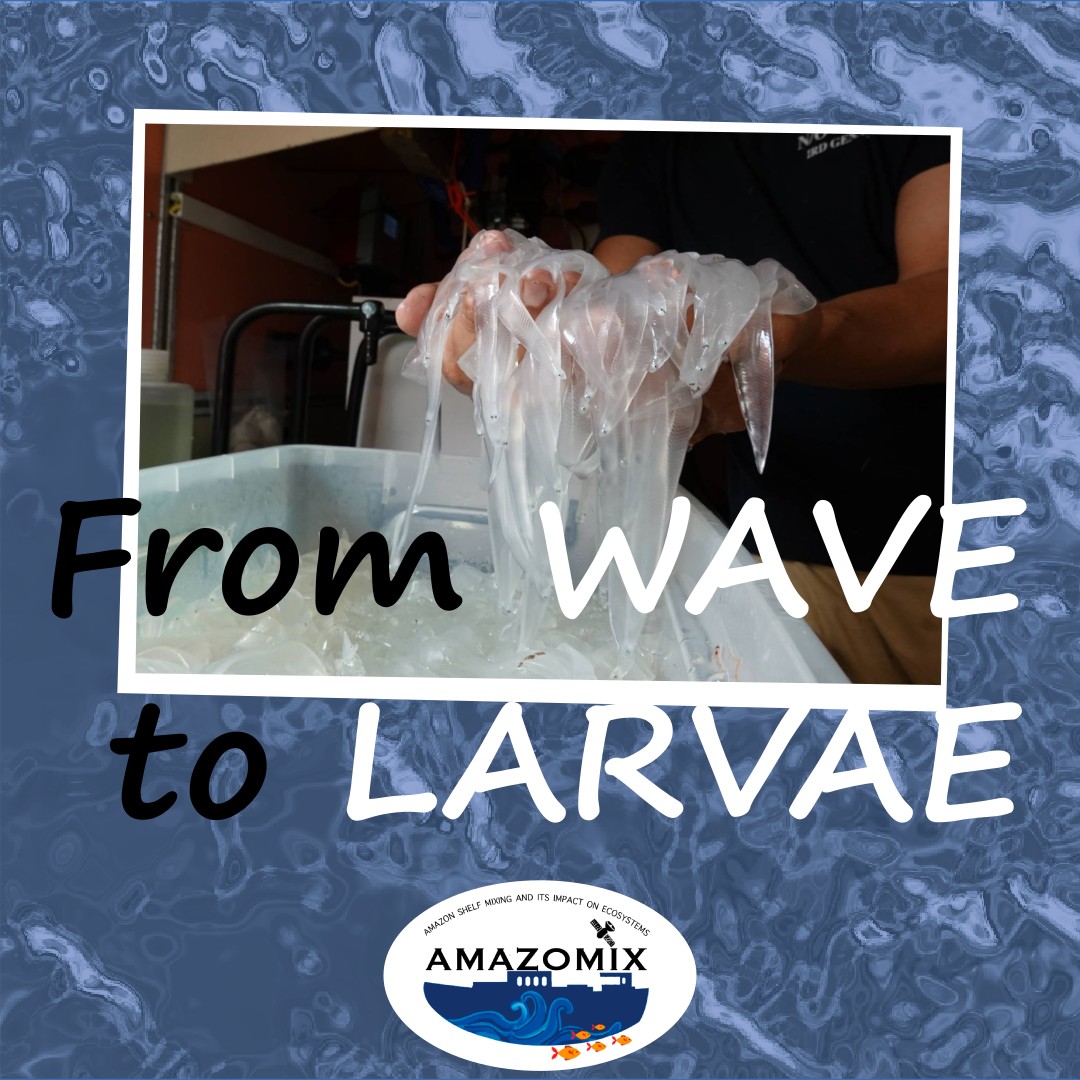
Exploratory Larvae
Most marine species, from shrimp to tuna to grouper, begin their lives as small eggs (about one mm in diameter). They then become larvae that are carried by currents for a few days or weeks, allowing species, even sedentary ones like corals, to travel hundreds of kilometers before settling into a new habitat!
Early catches from pelagic trawls (in open waters) and plankton trawls reveal the presence of numerous larvae from crustaceans, reef fish or sandy bottoms. One type of larvae, which we catch in abundance, attracts our particular attention.
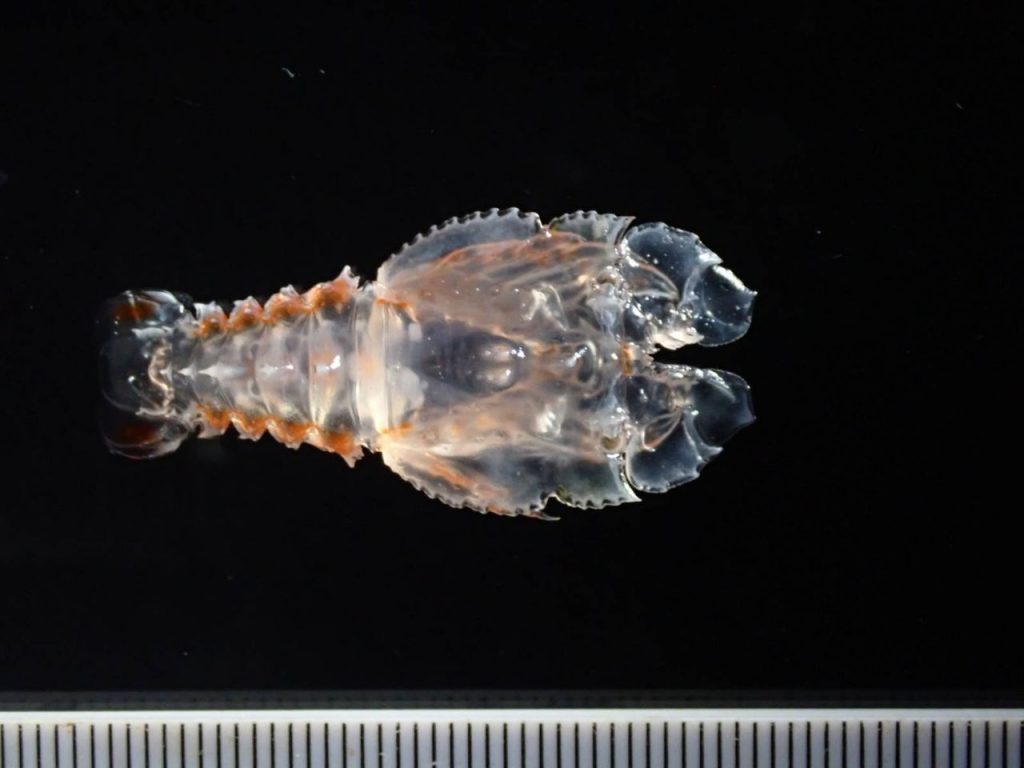
Lobster Larvae 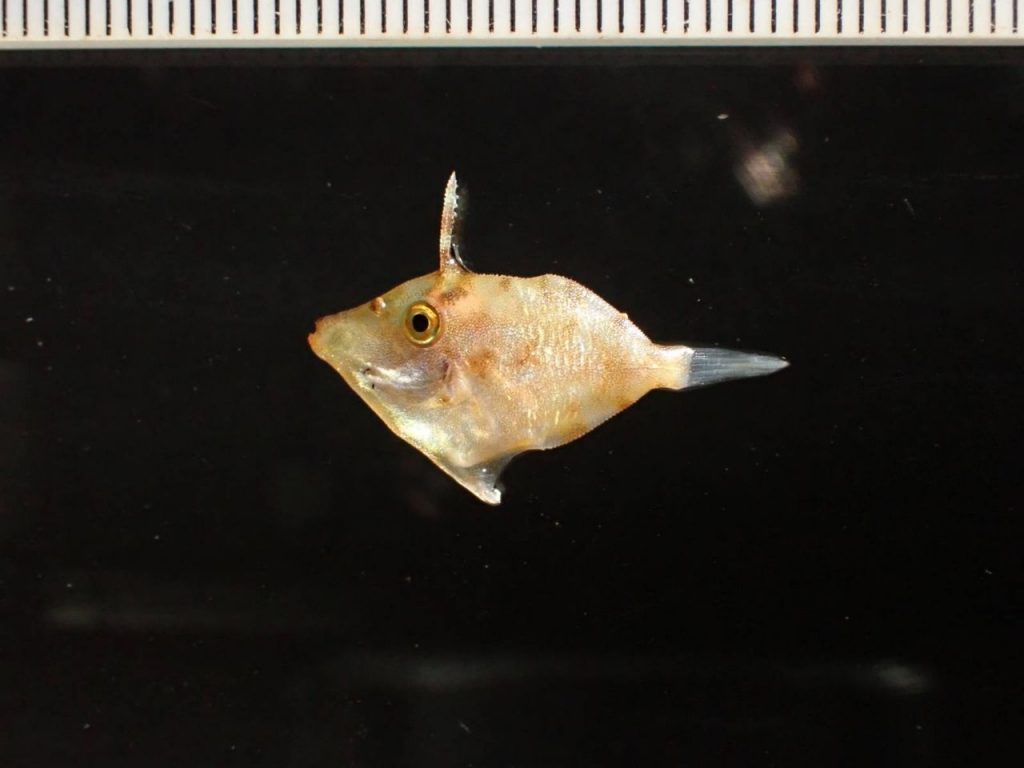
Surgeonfish Larvae
The mystery of leptocephaly
Some fish, notably eels, conger eels or tarpon, have a very particular larval form, the leptocephalic larva, i.e. “slender-headed”: the flattened and transparent body can reach over 30 cm in length!
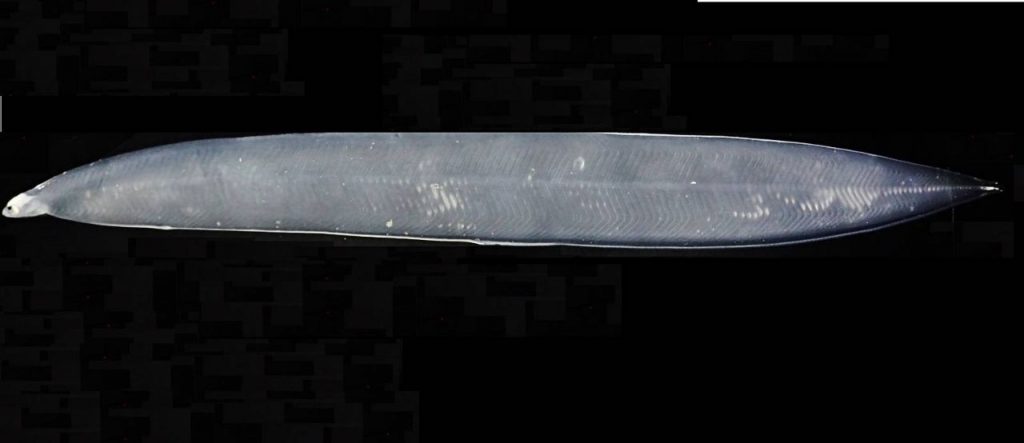
Leptocephaly Larvae 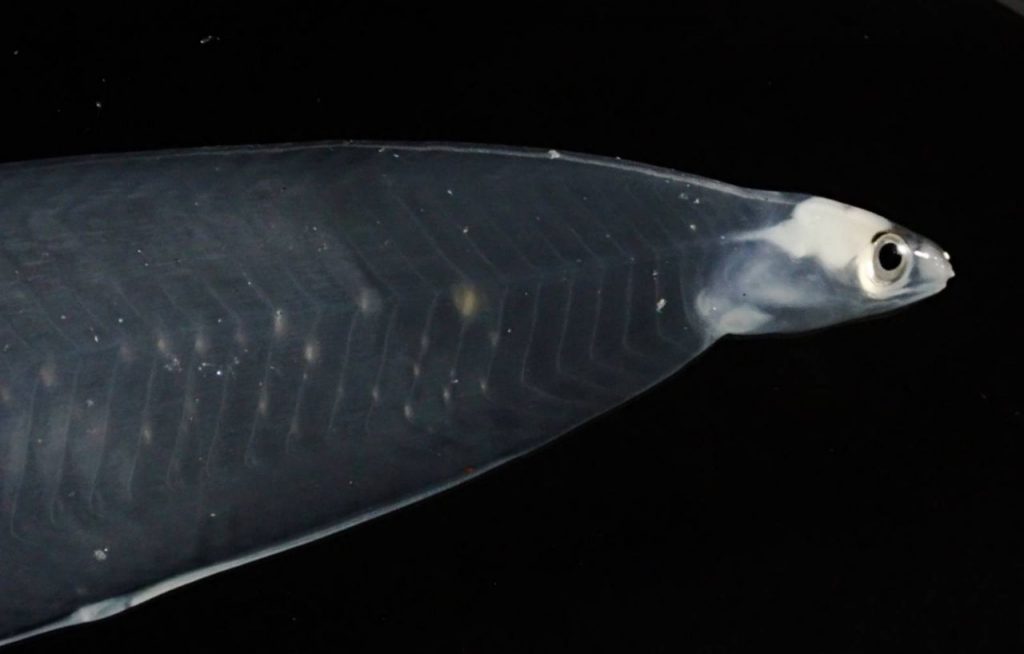
Leptocephaly Larvae
This larval stage can last several months and take them thousands of miles from the river (for eels) or region of origin. Unlike the others, these larvae do not consume phytoplankton or zooplankton, but ocean snow, composed of aggregates of sediment, organic matter, and decaying bacteria. Fragile, they are very little known because their ability to swim allows them to escape from the plankton net. It was mainly through specific trawling layers observed by acoustic means that we were able to collect them.
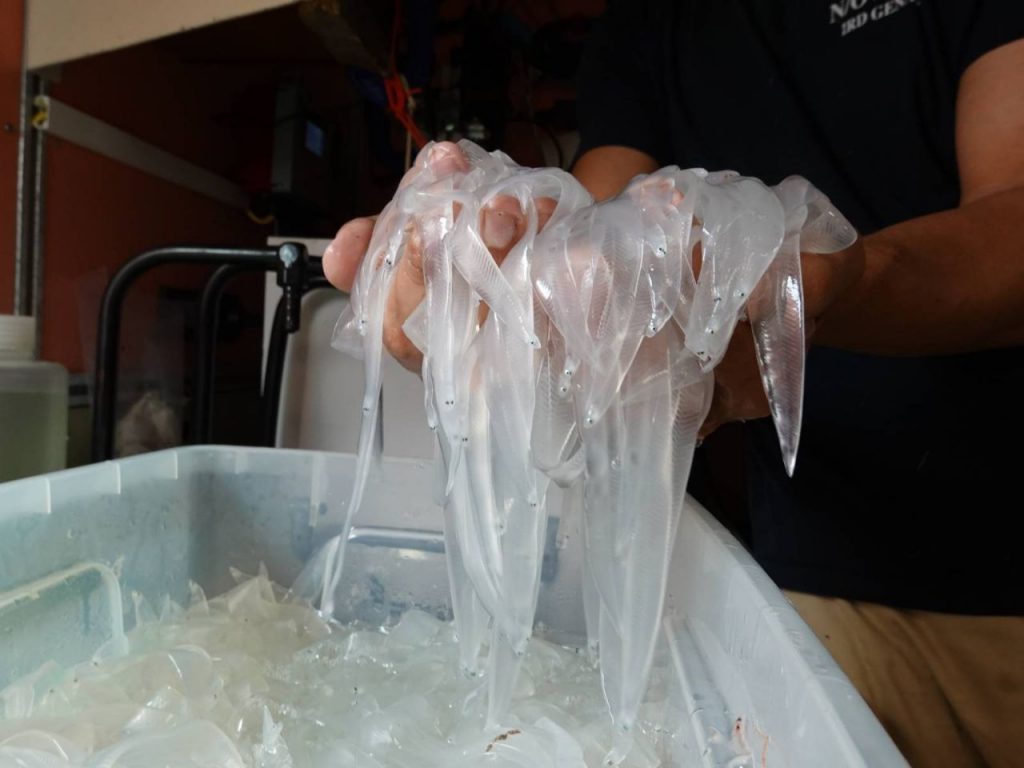
We want to develop an algorithm to identify them by acoustic methods and map their distribution; back in the lab, we hope to learn more about the origin and fate of these larvae through taxonomic, morphological, isotopic, and genetic studies.






